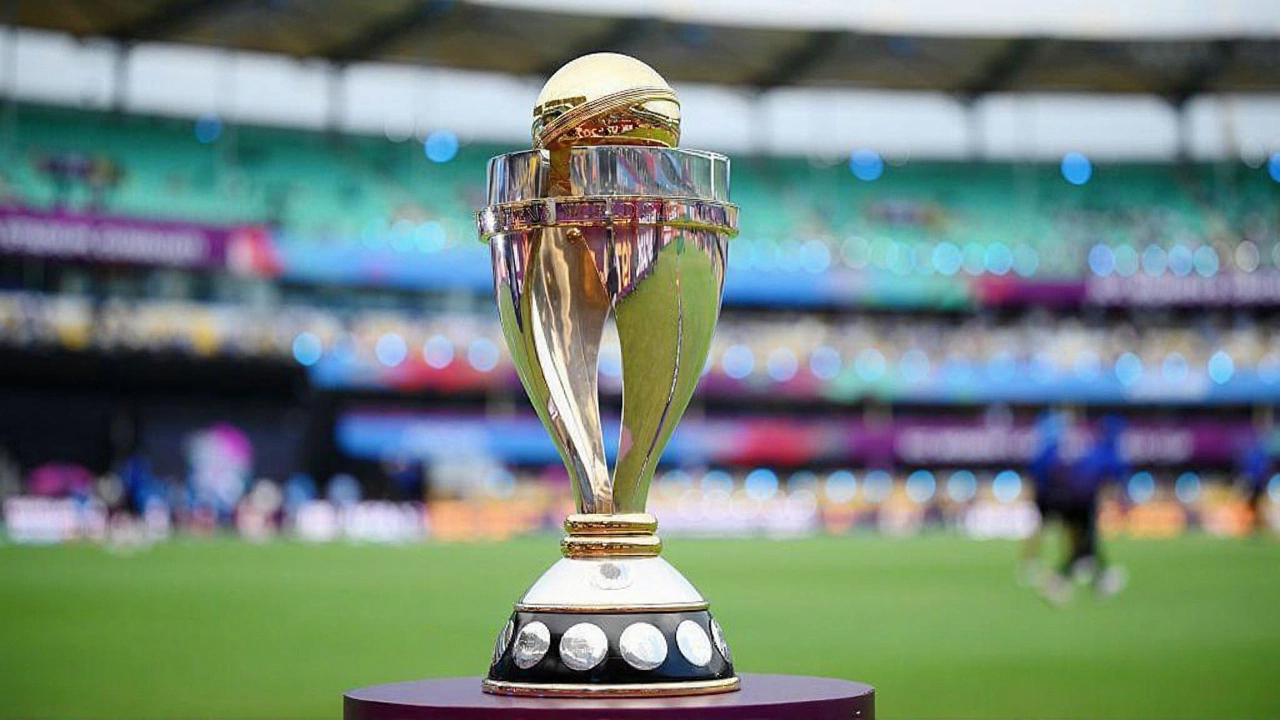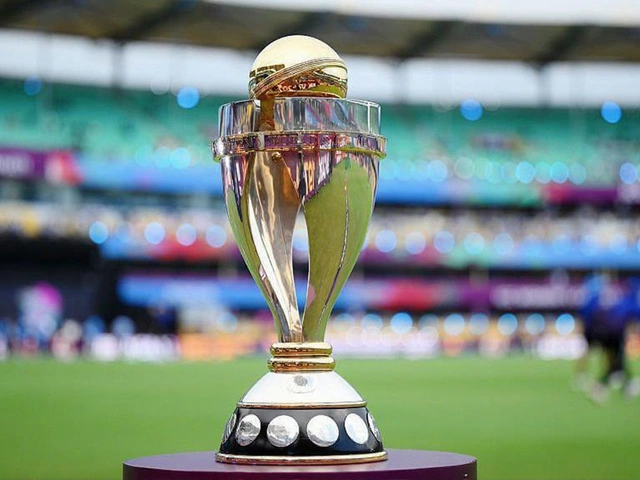India lifted the 2025 ICC Women's Cricket World Cup trophy on October 20, 2025, in a moment that will echo through generations—not just for the win, but for what it represented: a seismic shift in the value, visibility, and velocity of women’s cricket. The final, played at the R. Premadasa Stadium in Colombo, wasn’t just another final. It was the culmination of a tournament that shattered records, redefined expectations, and turned national pride into global admiration. The International Cricket Council (ICC) announced a record prize pool of $13.88 million, a 297% jump from the last edition. That’s not just money—it’s a statement. For the first time ever, the women’s game was financially matched to the men’s World Cup structure in scale, if not yet in total. And India, the host and champion, didn’t just win. They rewrote the script.
A Tournament Built on Momentum, Not Just Matches
The 2025 ICC Women's Cricket World Cup began on September 30, 2025, under the lights of the Assam Cricket Association Stadium in Guwahati. India’s opening win over Sri Lanka by 59 runs via DLS wasn’t just a result—it was a signal. The crowd, a sea of saffron and blue, roared like it was a final. And it felt like one. The tournament unfolded across three venues: Guwahati, Indore, and Colombo. The Board of Control for Cricket in India (BCCI) pulled off a logistical feat, hosting matches across borders with seamless coordination. Eight teams qualified, but the absence of the West Indies—semi-finalists in 2022—sent shockwaves. They hadn’t missed a World Cup since 2000. Their absence wasn’t just a gap. It was a warning sign for cricket’s traditional powerhouses.
The Stars Who Carried the Weight
Harmanpreet Kaur, India’s captain, didn’t just lead. She carried the hopes of a nation on her back. In the final, she smashed 87 off 92 balls, her calm under pressure a masterclass in leadership. But she wasn’t alone. Shafali Verma, who’d battled injuries and criticism in the lead-up, returned with a fiery 64 in the semi-final—her comeback story, as ICC’s own review put it, "inspired India’s World Cup win." Deepti Sharma’s all-round control, Jemimah Rodrigues’ elegant strokeplay, and the relentless pace of Pooja Vastrakar turned India’s middle order into a fortress. Australia’s Ashleigh Gardner and Ellyse Perry were brilliant, as always. But for the first time in a decade, they weren’t the final obstacle. They were the stepping stone.
The Numbers That Changed Everything
The $13.88 million prize pool wasn’t just a headline. It was a lifeline. The ICC allocated $5 million to the champions, $2.5 million to runners-up, and distributed the rest across all eight teams—minimum $500,000 each. That’s more than the entire prize pool of the 2017 tournament. The Times of India reported the total as ₹121 crore, a figure that made headlines in every Indian household. Broadcast rights surged 400% from 2022. Social media engagement? Over 4.2 billion impressions. The final drew 187 million viewers globally—benchmark figures, the ICC called them. And for the first time, a women’s match aired simultaneously on prime-time TV in India, Pakistan, and the UK. No longer a niche event. This was mainstream.
Controversy, Culture, and the Handshake Question
But it wasn’t all celebration. A moment of tension emerged when Pakistani commentator Sana Mir referred to "Azad Kashmir" during a broadcast, sparking outrage across Indian media. She later apologized, calling it an "unintentional slip." Meanwhile, the handshake question lingered. Would India’s players shake hands with Pakistan’s after their group-stage match? They didn’t. The BCCI issued a quiet statement: "The players’ focus remains on cricket." But the silence spoke louder than words. In a tournament that celebrated unity, the political shadows still stretched long. Nashra Sandhu’s bizarre run-out—accidentally knocking her own stumps while backing up—became a viral moment. And in another oddity, a Pakistani batter became only the second woman in World Cup history to be dismissed for "handling the ball." These weren’t just quirks. They were human moments in a game that’s finally being seen as human.

What This Means for the Future
Former Indian captain WV Raman put it best: "India’s women’s team is closing the gap on Australia." And he’s right. The gap isn’t just narrowing—it’s vanishing. Australia still has the depth, but India now has the belief. Sachin Tendulkar called it a "watershed moment." He wasn’t exaggerating. The BCCI has already signaled plans to launch a domestic women’s T20 league with a $20 million budget. The ICC confirmed that the next Women’s World Cup in 2029 will have an even larger prize pool, with a minimum of $18 million. And Meg Lanning, the retired Australian legend, didn’t just praise India—she nominated a 19-year-old Indian all-rounder as her "next global captain to watch." That’s the real victory. Recognition from the very top.
From Heartbreak to History
Harmanpreet Kaur’s interview with the ICC after the final was raw. "We lost in 2017. We came close in 2022. This time, we didn’t just want to play. We wanted to win. For every girl who was told cricket wasn’t for her—we did it for her." Her voice cracked. The room went silent. That’s the power of this win. It’s not just about trophies. It’s about turning doubt into destiny.
Frequently Asked Questions
How did the prize pool increase impact women cricketers’ careers?
The $13.88 million prize pool—up 297% from 2022—meant Indian players earned up to $1.2 million in tournament bonuses alone, more than many earned in their entire careers. This incentivized full-time training, attracted sponsorships, and led to the first-ever fully salaried contracts for 15 Indian women cricketers under the BCCI’s new policy. For the first time, players could quit second jobs and focus solely on cricket.
Why did the West Indies fail to qualify for the first time since 2000?
The West Indies lost key players to franchise leagues and struggled with inconsistent funding. They finished seventh in the 2022–2025 ICC Women’s Championship, missing the top five automatic spots. In the qualifier, they lost to Bangladesh and Ireland by narrow margins, exposing a talent gap. Their absence highlighted how quickly the global landscape is shifting—with nations like Bangladesh and Sri Lanka closing in fast.
What role did Shafali Verma play in India’s victory?
Shafali’s return from injury was pivotal. After missing the 2023 T20 World Cup, she came back with a 64 off 48 balls in the semi-final against Australia, anchoring India’s chase under pressure. Her aggressive opening gave India early momentum, allowing middle-order stars like Harmanpreet and Rodrigues to play freely. Her strike rate of 152 in the tournament was the highest among top-10 run-scorers.
How did viewership numbers compare to previous tournaments?
The 2025 final drew 187 million global viewers—nearly triple the 65 million from 2022. In India alone, 98 million tuned in, making it the most-watched women’s cricket match ever. Social media engagement hit 4.2 billion impressions, with TikTok and Instagram Reels driving 60% of youth viewership. Broadcasters in the UK and Australia reported record ratings for women’s cricket for the first time.
Will India continue to avoid handshakes with Pakistan in future matches?
The BCCI has not issued a formal policy, but sources indicate the team will follow the ICC’s protocol of "sportsmanship as standard." However, the absence of handshakes in 2025 was widely interpreted as a political gesture. With India and Pakistan likely to meet again in the 2029 World Cup, the ICC is expected to introduce mandatory handshake rules to prevent diplomatic friction from overshadowing the sport.
What’s next for women’s cricket after this World Cup?
The BCCI plans to launch a $20 million domestic T20 league by 2026, with franchises in all 28 Indian states. The ICC confirmed the 2029 Women’s World Cup will be hosted by South Africa and Australia in a joint bid, with prize money rising to $18 million. Crucially, equal pay for men’s and women’s World Cup winners is now under formal review, with a decision expected by 2027.


